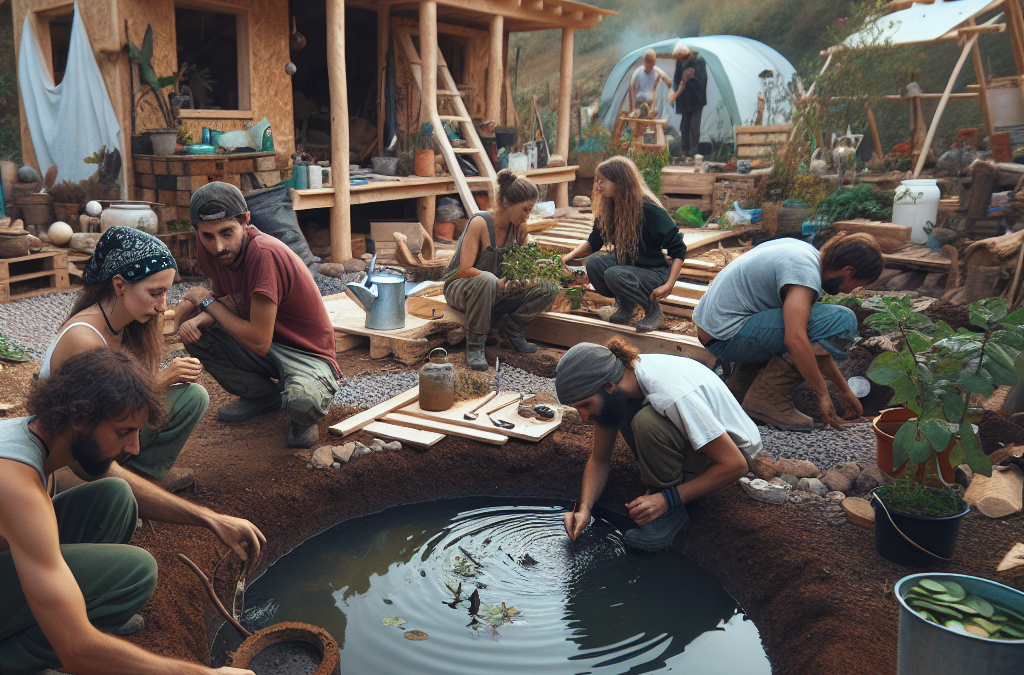Choosing the Right Location
Factors to Consider
When I first decided to build a small pond on my homestead, the location was everything. I learned that the size and shape of the pond depend heavily on the lay of the land. It’s vital to pick a spot that can hold water naturally, preventing unnecessary leaks and runoff. If you have a low-lying area, that’s usually ideal, as gravity will help keep your pond full.
Another factor is sunlight. I found out the hard way that too much shade from trees can lead to algae problems later on. But a little shade can also be beneficial to keep the water cool. So, I struck a balance with a few strategic trees nearby—enough to give me that picturesque look while keeping the water healthy!
Finally, think about proximity to your home and other structures. I wanted my pond close enough to enjoy the view from my porch, but not so close that it became a mosquito haven! A good rule of thumb is to keep it at least 10 to 15 feet away from any buildings.
Designing Your Pond
Shape and Size
The design of your pond is just as crucial as its location. My first design was a classic oval shape, but I ended up changing it to a more natural, winding shape to mimic a small stream. This made it look inviting and more like a part of the surrounding landscape.
In terms of size, think about what you’re aiming for. If you plan to keep fish, you’ll want at least 100 square feet of surface area, which allows them space to thrive. Make sure to also incorporate varying depths. I dug areas that are shallow enough for plants and deeper spots for fish to escape the heat.
Don’t forget about the aesthetics! I placed some flat stones around the edges, creating sitting areas. A pond that’s not only functional but also beautiful adds to the charm of your homestead. Plus, it gives me the perfect quiet spot to enjoy my morning coffee!
Building the Pond
Tools and Materials
Now we get to the nitty-gritty—building it! You don’t need fancy equipment, but a few basic tools will save you a lot of time. A shovel is your best friend, and if you can rent a small excavator, that’ll make the digging much easier!
For lining the pond, I used a heavy-duty pond liner, which is super important to keep the water from seeping into the ground. You can get different materials like EPDM or HDPE. They both do the job, but make sure to check for UV resistance if you’re in a sunny spot.
Lastly, I gathered some natural stones and gravel for the edges. Not only does it look good, but it also helps stabilize the pond banks and prevent erosion. After all that work, you want your pond to last through the seasons!
Filling the Pond
Water Sources
Once everything’s dug out and lined, it’s time to fill the pond with water. Some folks use a hose, but if you have well water or a rainwater collection system, those options are better for sustainability. I decided to use a combination of both, especially since my area has plenty of rainfall.
If you’re in a dry region, you might want to consider a water catchment system to gather rainwater. It can be a bit of work to set up, but once it’s done, you’ll have a sustainable and free water source for your pond.
Keep an eye on the filling process. You want to check for leaks or irregularities in your pond’s lining. It’s a bit of a waiting game, but be patient and make sure everything fills up correctly before planting any flora.
Maintaining Your Pond
Regular Care Routines
Now that your pond is up and running, it’s time for the fun part—keeping it healthy! Regular maintenance is crucial. I carved out time each week to check the water levels and clear any debris flowing in from rain or wind.
This is also when I check on the aquatic plants I added—they help filter the water and provide food for fish. I’ve found that a well-balanced aquatic ecosystem can literally take care of itself. Just be aware that at times, you might have to trim back the overly greedy plants so they don’t take over!
Don’t forget about the fish! If you decide to stock your pond, keep their needs in mind. That means checking on water quality and ensuring there’s adequate food for them. Healthy fish are a sign of a healthy pond, and they’ll add so much life to your little oasis!
FAQ
1. How deep should I build my pond?
For a small pond, aim for varied depths. A minimum of 2 feet deep is generally recommended to help maintain temperature and support fish, but having deeper areas allows for a balanced ecosystem.
2. What plants are suitable for a small pond?
Some great options include water lilies, cattails, and lotus plants. These not only enhance the beauty of your pond but also help maintain its ecosystem by providing oxygen and habitat for aquatic life.
3. How often should I clean my pond?
Plan to do a thorough cleaning once or twice a year, especially in spring and fall. Check for debris and excess algae throughout the season and remove them as needed to keep the water healthy.
4. Can I keep fish in my small pond?
Yes! Many people keep fish like goldfish or Koi in small ponds. Just be sure to provide ample space and check the water quality regularly to ensure your fish thrive.
5. What if my pond starts to leak?
If you notice it leaking, the first step is to check your liner for damage. Sometimes, simply patching the liner can fix the problem. If it’s more serious, you might need to consider redoing parts of the pond.





